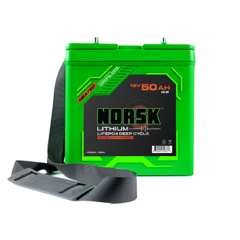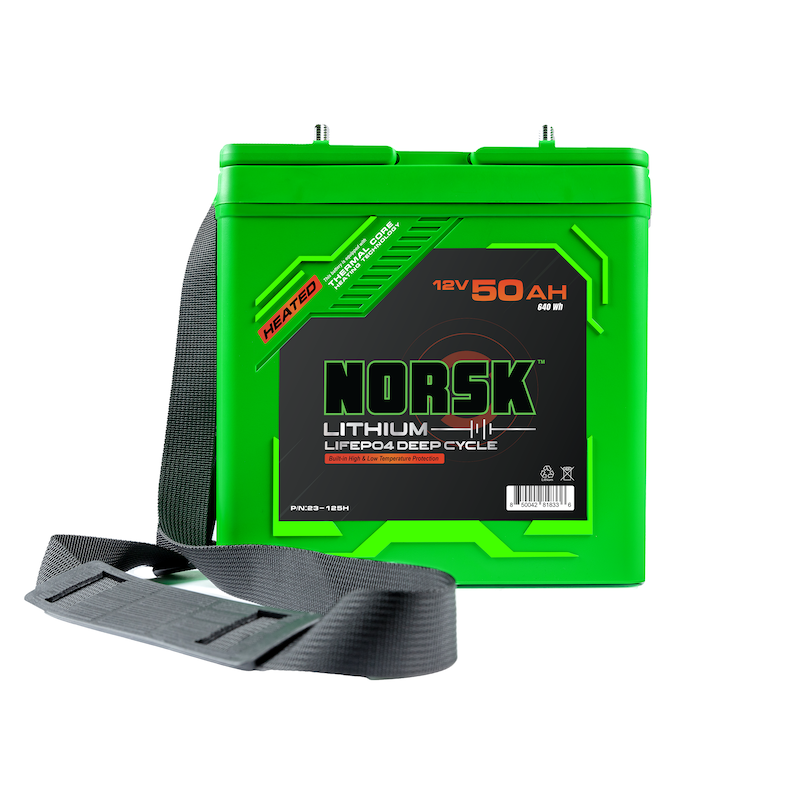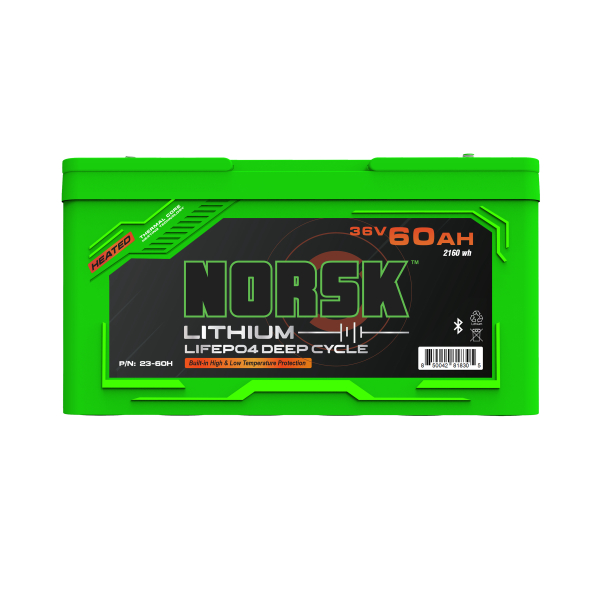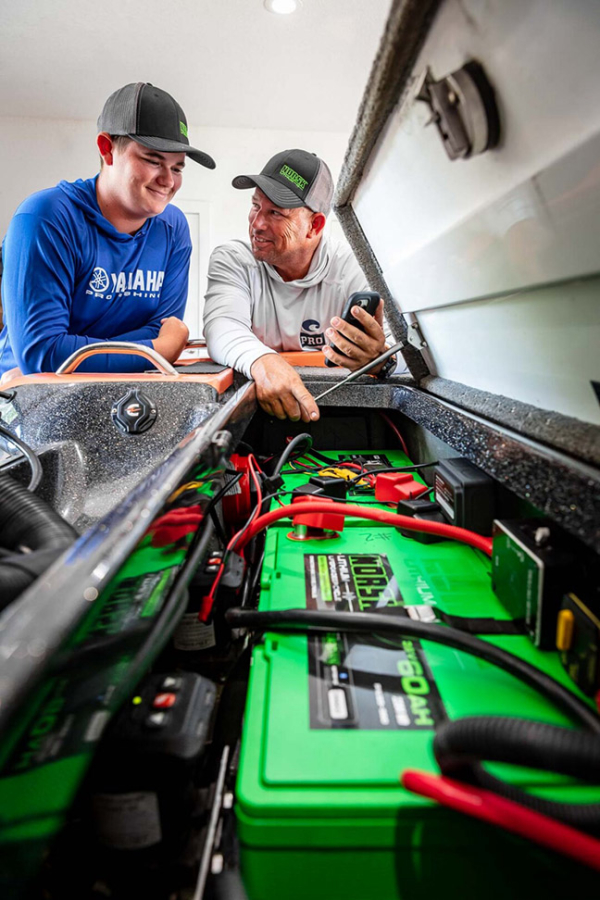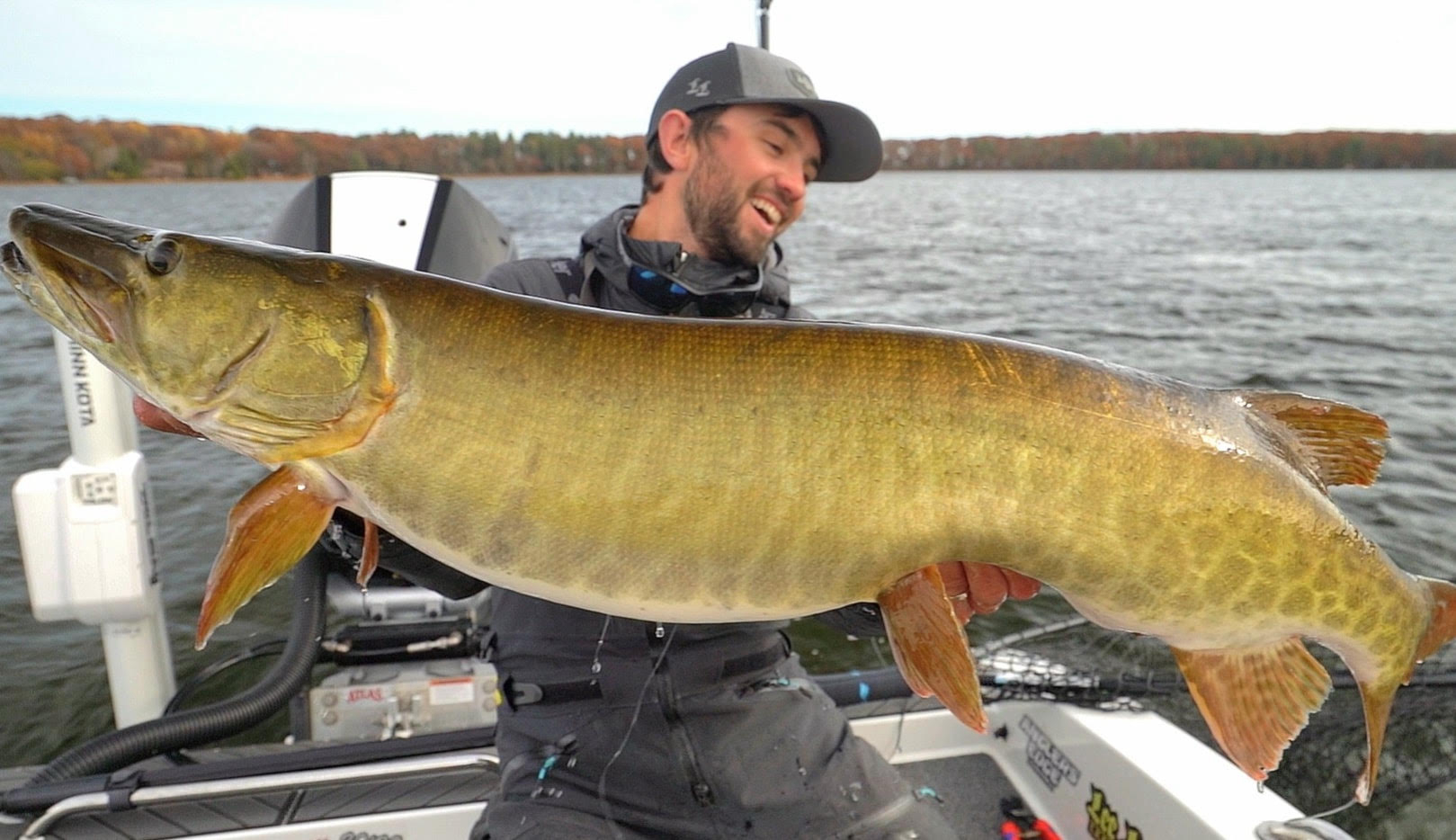Muskie Record Holder Talks ‘Power’ Fishing Tactics
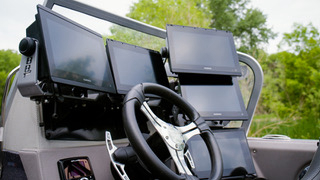
28-year-old muskie guide, Nolan Sprengeler, installed NORSK Lithium for critical power requirements to hunt & boat big fish
MN State Record Muskie: How It All Went Down
Then 27-year-old Public Works employee, part-time guide, Nolan Sprengeler, made quite a name for himself back in 2021 when he landed a 57 ¾-inch by 29 inch, 55 pound, 14.8 ounce, muskie on Mille Lacs lake. Sprengeler’s fish bested the previous 54-pound Minnesota state muskie record (weight) caught on Lake Winnibigoshish in 1957.
“It was late November and it really looked like Mille Lacs was going to ice up which would mean our muskie season was done for the year. I backed up the boat at the ramp and the water was frozen in the harbor. We checked a few more resort accesses and they were all frozen. Honestly, I was ready to go home. But my buddy Kevin Kray really wanted to fish. So we went back to the first access, chopped out the ice in the harbor with a spud bar, backed the boat in, and off we went,” recalls Sprengeler.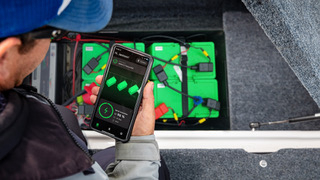
“It was 17-degrees when we got out there, so all our rods were freezing up. We definitely had the silicone spray going. I was down to my last rod at 9 pm and felt that thump, set the hook, and we netted it. She was hooked super deep so we had all the release tools out, which was even more difficult in the cold water. We got the hooks out, laid her out on the bump board, and she measured 57 ¾ inches. We got her back into the net and stabilized in the water. Kevin thought she was 60 pounds,” notes Sprengeler.
“She had been hooked in the gills, so we couldn’t get her in good enough shape for release,” recalls Sprengeler. “By this time, we also realized she was a state record so we got off the lake with the fish in the livewell. I called my buddy Austin and he found a certified scale at a meat market in Milaca but when we got there at 1 a.m. it turned out it was a 30-pound deli scale. So we drove home, packed the livewell and fish with ice, parked the boat in the garage, and started calling around to all the tackle shops and grocery stores the next morning.”
“Everybody we called had 30 or 50 pound scales. Finally, we found a UPS store in Golden Valley, Minnesota, that had a larger certified scale. So that’s where we took the fish and she weighed in at 55 pounds, 14.8 ounces. From there, we took her to the DNR office in Shakopee for verification. Following that, we drove to a taxidermist in Wisconsin to get the process started for a mount and replica. It was a long day! Then, the next couple days were a whirlwind of phone calls, interviews, and congratulations,” says Sprengeler.
https://www.youtube.com/watch?v=-tAckx4M_fc
Sprengeler’s Big Fish System
While it all depends on the day, the lake, and the technique, Sprengeler says he’s typically using between two and six graph screens with up to four forward-imaging transducers.
Why all the screens?
Sprengeler’s goal on big muskie waters is to find the best spot-on-the-spots—which the forward-facing and live imaging units help him locate—whether it’s weedbeds, reefs, rock piles, bottom hardness transitions, or simply places where big fish feed. That’s where he drops waypoints so he can come back later in the day—or nighttime—and he’s “not stumbling around.”
Additionally, Sprengeler says if you point LiveScope in Perspective Mode off the side of the boat at night in dirty water you can actually see your lure come in and if there’s a fish behind it, which greatly helps with setting up figure-8’s under the shroud of darkness.
During the day, he says a perfect scenario is cruising over shallow sand and spotting muskies with his electronics, which allows him to stop the boat, make a few casts, and move on.
“There’s also a bite in June and July when muskies will suspend in the smaller basins and you can actually target them. With LiveScope, I’m more focused on making quality casts than a quantity of casts,” notes Sprengeler.
As far as the state record muskie goes, Sprengeler had dialed in some big fish spots on Mille Lacs where a “queen” might chow on fall-spawning ciscoes.
“I had used LiveScope to find the best part of the reefs where the ciscoes were. So when we came back I kind of thought we had a shot at a big fish, just not something of that caliber. I caught her on a 15-inch paddletail swimbait. It was insane,” recalls Sprengler.
Today’s Technology At Work
Sprengeler has a total of seven Garmin 8610 and 8612 graphs on his Ranger 622. Three utilize LVS34 LiveScope Plus transducers and he sometimes “plays around” with Garmin’s legacy Panoptix PS31 transducers because “you can see out a little farther with those for that June and July small basin bite.” Two of the LVS34 LiveScope Plus transducers are mounted on his 36-volt Minn Kota Ultrex 112, the other on a custom pole he fabricated in his garage.
One benefit, he says, of using LiveScope is trolling with live bait. “LiveScope allows you to see how deep your baits are running, if anything is checking out the baits, or if you’ve got weeds on them.”
While Sprengeler is willing to troll for big fish bites, he says his favorite way to catch muskies is spotting them on shallow sand and throwing a double 8 bucktail.
“I like catching them shallow with LiveScope in Perspective Mode and then suspended in Forward Mode on rubber baits. It’s like ‘get ready, the fish sees it, and it’s going to eat it!’”
Sprengeler realizes the muskie community is split between lovers and haters of forward-facing sonar. As a young, progressive angler and guide, he says he was quick to adopt the technology in the same manner that anglers before him adopted Side Imaging, 360 Sonar and High Definition lake maps.
“Sure, my partner Tim Willems and I were the ones who made the PMTT musky tournament ruling happen. We caught 10 or 11 fish, which we located with LiveScope, all suspended during a bug hatch. So, we used our knowledge of electronics to get them to bite over those two days on the Eagle River/3 Lakes Chain in Wisconsin and won the event. Since, the (PMTT) Professional Musky Tournament Trail has banned the use of forward-facing sonar.”
Power Fishing
Sprengeler says the biggest problem he ran into rigging his Ranger 622 with seven graphs and several forward-facing/live imaging sonar transducers and black boxes was supplying ample power—especially given the extremely cold weather he likes to fish in. “Until you’ve tried to provide power to multiple 12-inch or larger graphs for a long day on the water, most people just don’t have an appreciation for how much power it takes to run everything. It just isn’t possible with lead acid batteries due to how fast the voltage drops under load. Eventually the low voltage alarms on your graphs will drive you nuts. Lithium batteries make it all possible.”
“I was using the lithium batteries that came with the boat, but they didn’t provide the juice I needed,” says Sprengeler. “I was fishing bass down in Texas in February and my trolling motor batteries went into limp mode on me. These batteries were about 6 months old and rigged at the factory when the boat was built and they were already toast. So I had to borrow some batteries from a friend. That put me over the edge and made it very clear to me that not all lithium batteries are the same. Not even close.”
“So I brought my boat out to rigger Mat Rowan at Big Fish Encounters in Chippewa Falls, Wisconsin, and he recommended that we use NORSK Lithium. Now I run three NORSK Lithium 100AH 12V heated batteries to power my seven screens and have had zero issues fishing 12 hours a day or more, even in the extreme cold, even with all the screens powered up. I also use three of the same model heated 100AH battery to power my Minn Kota Ultrex 112. I run a starting battery that isn’t NORSK, which I plan to replace when the NORSK 180 Ah starter/house combo battery comes out. I’ve been out to Fort Peck, Montana; Green Bay, Wisconsin; Mille Lacs in late November; basically all over with these batteries and the performance has been perfect,” offers Sprengeler.
Finding room for all the NORSK Lithium batteries could have been a problem, but Big Fish Encounters owner, Mat Rowan, is used to rigging challenges.
“Mat put one NORSK battery in the compartment that holds the wash-down pump near the kicker motor and arranged two other NORSK batteries in the left compartment. Then there are three up front in the Ranger trolling motor battery compartment. Mat did a way better job than I would have done,” laughs Sprengeler.
The Guardian App Makes Life Easy
To monitor his six NORSK Lithium batteries, Sprengeler uses the NORSK Guardian app, which he says “makes things really easy.”
“You can see the voltage and estimated run-time right on your phone. But what I really love about the NORSK Guardian app is when I’m fishing on-the-road staying at hotels, I’m never quite sure if the extension cord is working and if the boat’s actually charging. Now I book a room as close to where the boat is parked and I just turn on my phone, open the app, and I can guarantee it’s charging. If the charge process is interrupted by someone tripping a breaker or accidentally unplugging my charger, I’ll actually get a notification on my phone to let me know something happened that I need to address. That’s job security for me. All I do is travel, guide, and fish. I’ll be on Leech Lake for a month and a half and then run trips out of Green Bay,” says Sprengeler.
PARTING WORDS
What’s unique about Sprengeler’s story is how he arrived at installing NORSK Lithium to do what he does—whether that’s chasing giant fish with buddies or guiding throughout the week.
“A lot of my peers recommended NORSK so I started looking closely at what they had to offer. After all, lithium batteries are an investment. What was critical for me was the fact that they offer a heated battery. As a muskie fisherman who fishes in really cold conditions, I don’t always have the opportunity to put my boat in a heated shop if I’m fishing somewhere in late November. And I need my batteries to charge, bottom line, so Norsk’s Thermal Core Heating system ensures that my lithium batteries will charge overnight no matter how cold it gets. And that’s just not the case with most lithium batteries that simply will not take a charge when the temps fall below 32 degrees. I’ve seen the frustration on friends’ faces when they roll out of the hotel room on a cold November morning in anticipation of a hot bite only to find their batteries didn’t charge at all overnight. Their day is ruined and I know my heated Norsk batteries will be 100% ready to go. I rely on them all day. If I don’t have fully charged batteries, I can’t go fishing. It’s that simple. And my Norsk batteries have never let me down.”
ABOUT NORSK LITHIUM
When it’s time to start catching fish and taking names, you want NORSK Lithium on your side. We are open-water anglers and ice fishermen who traverse the U.S. and Canada chasing the best bites. We make the bone-jarring 50-mile run across big water. We live for the adrenaline rush of a 40-mile trek by snowmobile in the freezing cold just to snag the best ice fishing bites.
Our lithium batteries have been tested in the harshest conditions by the harshest critics – us. We push our lithium batteries to the limit because we crave the finest fishing experience possible. No angler should be thwarted by second-rate battery performance. You don’t need to settle for your grandpa’s technology.
Utilizing the super-efficient, unbeatable potency of lithium technology, NORSK Lithium batteries reduce cheap knock-offs to fancy paperweights. Every NORSK Lithium battery is built to endure. Our batteries outwork the competition every time.
NORSK Lithium powers your passion so you can chase adventure. We personally rely on these same batteries to power our pursuit of an exhilarating outdoor experience.
Our commitment to you is the same promise we make to ourselves – we will never cut corners, we will never stop improving our battery technology – and we will always take care of our customers after the sale.
Your story is our story. We have intentionally tethered our business’s success to our customers’ satisfaction. Simply put, NORSK Lithium exists to power your passion for the great outdoors.


